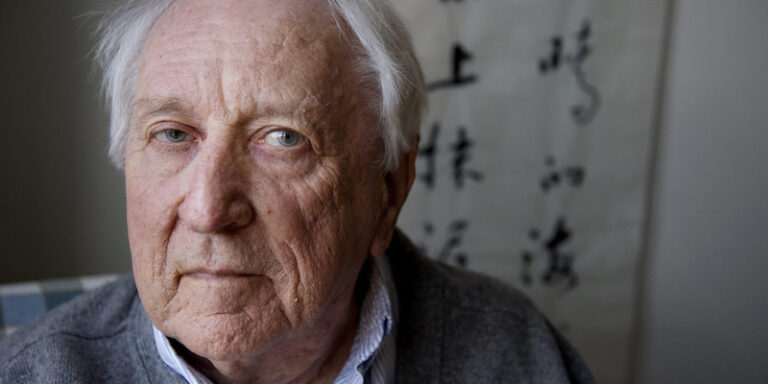Meet Your SoulMate Today
My Soulmate Finder
This first appeared in Lit Hub’s Craft of Writing newsletter—sign up here.
I.
When I found myself living in Sweden, learning the language well enough to read one of my all-time favorite poets, in the original Swedish, it set me on the path to translation and, ultimately, the task of tackling his complete works. In the three years I was there, I wrote poems that had a spareness and voice that felt very different from my other work. Was this my translating Tranströmer coming through, or the way learning a language necessitates the paring down of speech? Was it the stark Swedish landscape with its extremes of light, the sudden isolation from family and friends, what I was reading at the time, what was happening in the world or in my relationships?
I’m often asked how translating influences my own creative writing process. But, of course, influence is impossible to pin down. I’m curious why I’m rarely asked the reverse, how my creative writing process influences my translating. Wouldn’t it be reciprocal?
That question interests me. But where- and however these two crafts of mine meet feels outside of my awareness, maybe at the very edge of consciousness, that borderless place where inner and outer landscapes converge. The verb “meet” seems apt because it suggests a connection that precedes influence and yet has the potential to expand beyond influence to include an exchange. Which brings to mind the ecological concept of ecotone, a reference to the transition between two communities in nature, such as the edge between forest and open field, where there are no distinct boundaries, just overlap and melding, and where the richest diversity of life exists.
In my Afterword to Bright Scythe, when describing the depths of my immersion in Tranströmer’s work once I could read it in the original Swedish, I say: “Maybe it was the loneliness and strange reconfiguration of identity that came from living in an unfamiliar place, but I felt I was discovering a third language, at the intersection of the English and Swedish, that helped me locate myself in the context of my foreignness.” Too much time and distance have since passed, but I do remember feeling like I’d entered some new and impossible-to-articulate terrain.
Five years after moving back to the U. S. from Sweden, I returned for a visit. While walking around our old neighborhood and visiting my favorite haunts in Stockholm, I became aware that random lines of Tranströmer’s poetry were scrolling through my head—mostly in English. It was almost unconscious, but when I realized it was happening, it dawned on me that while I was living there and immersing myself in Tranströmer’s words, I was simultaneously struggling to find my place in his country.
Somewhere along the way, my immersion in Tranströmer and my search for a sense of place merged. As if the poetry became the place, and the place the poetry. I can’t separate this fusion of translation and place from my own writing because I was carrying that around in my head, too.
Somewhere along the way, my immersion in Tranströmer and my search for a sense of place merged. As if the poetry became the place, and the place the poetry.My own poems and the poems I translate feel like places to me, equally physical in their presence. Maybe this is because both my and Tranströmer’s writings are deeply influenced by the physical natural world. More often than not, both writing and translating are, for me, explorations through that world. Or maybe it’s because there’s a physical aspect to the writing process itself.
When translating, once I emerge from the rabbit hole of literal translation—puzzling over word order and choice, poetic strangeness, cultural or historical references, rhythm, tone, all the obsessive fiddling—I print the poem out and set it aside for a good long while, hoping to come back to it with a bit of amnesia, freed from all that cerebral baggage. I do the same with my own work. Then I pin the poem or translation on my bulletin board and stand there, eye-to-eye with it, pencil in one hand, fat eraser in the other, underlining, erasing, revising, reading it aloud line by line (for translations, alternating the Swedish with the English), over and over.
An ecotone is so rich and diverse because, in addition to hosting life from the overlapping communities, it hosts its own unique life. Was that new terrain of mine the translation itself?
II.
In Brian Henry’s “Translation: An Essay” (Blackbird, Fall, 2018), he says: “I need to be able to communicate with whomever I’m translating—for practical reasons, but also because, for me, the only way to overcome the ‘impossibility’ of translation is to approach it as an act of friendship, a living act.” Henry isn’t necessarily placing a higher value on this “living act,” but outlining why it’s central to his process as a translator. I’m intrigued by the opportunities and limitations such a process might present, but mainly compelled to reflect on my own experience with Tomas and Monica Tranströmer.
It’s important to note that in 1990 Tomas had a major stroke that resulted in right-sided paralysis and what had been described in everything I’d previously read as “difficulty speaking.” Also noteworthy is that I’m an RN. After my first visit with the Tranströmers, when I was still gaining proficiency in Swedish and well before I’d started translating Tomas, I wrote in my journal:
As Monica and I move back and forth between Swedish and English, it becomes clear that Tomas is aphasic. How did I not know about the degree of his “difficulty?” He understands perfectly, is obviously engaged in the conversation, but cannot articulate a response, except for the reply “Det är mycket bra” (“It’s very good”), which he repeats fairly often, with great facial expression, sometimes gesticulating with his left hand.
A year or so later, our conversations turned to my translations of The Sorrow Gondola. Monica, who has always been Tomas’s main reader, said that both she and Tomas had read and “discussed” my translations. Having witnessed, on many occasions and for hours on end, how fluently she could interpret his expressions, gestures, and seemingly futile attempts at speech, I had confidence in the depths of those discussions. On their printed-out version of my translated manuscript, there were occasional words underlined in faint and slightly shaky pencil.
We went through the poems, one by one, sometimes merely talking about that poem’s occasion, where Monica would share a story, Tomas eagerly listening. If there was an underline, we’d discuss that word. By then, our conversations were purely in Swedish, so in Swedish I would explain my English word choice (using Swedish words other than the Swedish word used in the original text!).
We spent hours and days in conversation, with many distractions for lunch, strolls, or lapses into social chatter. At some point, it became clear that the process was as much about honing trust as honing the translations. In fact, we never discussed the last handful of poems in that short collection.
My point is that the relationship itself was a translated experience, based on a connection that stemmed from the body and worked outward through the poetry to a mutual trust. Was this level of friendship, which encompassed the literary and the deeply personal, enough, as it was for Brian Henry, “to overcome the ‘impossibility’ of translation?”
If Weinberger is suggesting there’s originality in each translated work, it would have to be borne, in part, from the myriad forces influencing the translator’s life.I hadn’t thought of it in those terms. But it does speak to the unique influences of my translation process and the larger notion that, as translators, we all bring something truly our own to the work. Eliot Weinberger assures us of this in 19 Ways of Looking at Wang Wei, when he says, “The transformations that take shape in print, that take the formal name of ‘translation,’ become their own beings, set out on their own wanderings.”
Of course, “overcoming the impossibility” isn’t just a translator’s struggle. It’s an artist’s struggle. Whether translating, writing, painting, or performing a dance or musical piece, perfect correspondence is rare. If Weinberger is suggesting there’s originality in each translated work, it would have to be borne, in part, from the myriad forces influencing the translator’s life. Maybe that new terrain of mine was less about the work itself and more about engendering creative possibilities, including how to think about life and living, language and connection.
Returning to the question of influence, when it comes to life experience and any kind of immersive creative work, isn’t it all influence? If so, surely at some point influence becomes confluence.
______________________________

The Blue House: Collected Works of Tomas Tranströmer translated by Patty Crane is available via Copper Canyon Press.









 English (US) ·
English (US) ·